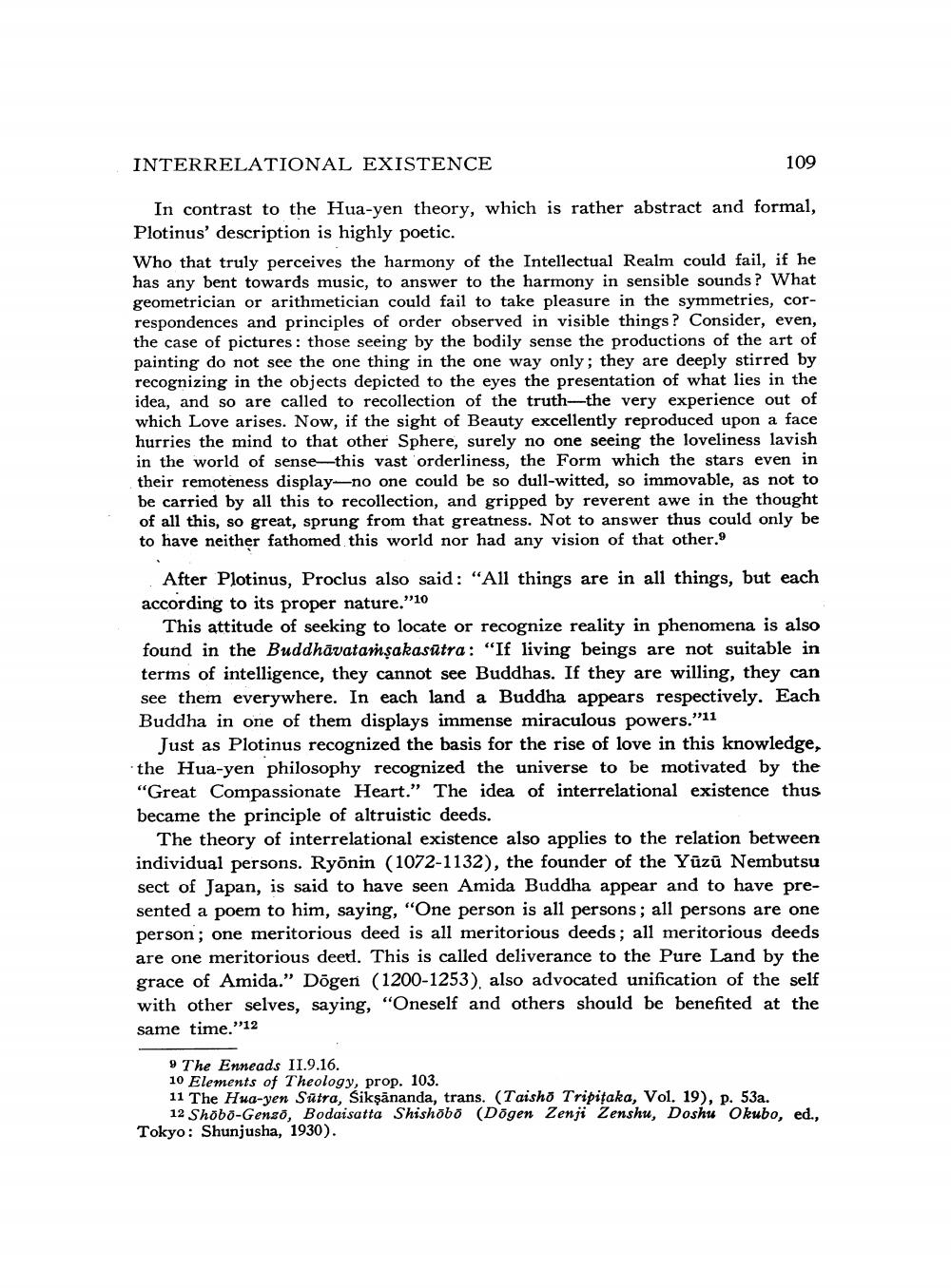________________
INTERRELATIONAL EXISTENCE
109
In contrast to the Hua-yen theory, which is rather abstract and formal, Plotinus' description is highly poetic. Who that truly perceives the harmony of the Intellectual Realm could fail, if he has any bent towards music, to answer to the harmony in sensible sounds ? What geometrician or arithmetician could fail to take pleasure in the symmetries, correspondences and principles of order observed in visible things ? Consider, even, the case of pictures: those seeing by the bodily sense the productions of the art of painting do not see the one thing in the one way only; they are deeply stirred by recognizing in the objects depicted to the eyes the presentation of what lies in the idea, and so are called to recollection of the truth-the very experience out of which Love arises. Now, if the sight of Beauty excellently reproduced upon a face hurries the mind to that other Sphere, surely no one seeing the loveliness lavish in the world of sense this vast orderliness, the Form which the stars even in their remoteness display-no one could be so dull-witted, so immovable, as not to be carried by all this to recollection, and gripped by reverent awe in the thought of all this, so great, sprung from that greatness. Not to answer thus could only be to have neither fathomed this world nor had any vision of that other.
After Plotinus, Proclus also said: "All things are in all things, but each according to its proper nature."10
This attitude of seeking to locate or recognize reality in phenomena is also found in the Buddhāvatarsakasūtra: "If living beings are not suitable in terms of intelligence, they cannot see Buddhas. If they are willing, they can see them everywhere. In each land a Buddha appears respectively. Each Buddha in one of them displays immense miraculous powers."11
Just as Plotinus recognized the basis for the rise of love in this knowledge, the Hua-yen philosophy recognized the universe to be motivated by the "Great Compassionate Heart." The idea of interrelational existence thus became the principle of altruistic deeds.
The theory of interrelational existence also applies to the relation between individual persons. Ryōnin (1072-1132), the founder of the Yüzū Nembutsu sect of Japan, is said to have seen Amida Buddha appear and to have presented a poem to him, saying, "One person is all persons; all persons are one person; one meritorious deed is all meritorious deeds; all meritorious deeds are one meritorious deel. This is called deliverance to the Pure Land by the grace of Amida." Dögen (1200-1253), also advocated unification of the self with other selves, saying, "Oneself and others should be benefited at the same time."12
9 The Enneads II.9.16. 10 Elements of Theology, prop. 103. 11 The Hua-yen Satra, Sikşānanda, trans. (Taisho Tripitaka, Vol. 19), p. 53a.
12 Shobo-Genzo, Bodaisatta Shishobo (Dōgen Zenji Zenshu, Doshu Okubo, ed., Tokyo: Shunjusha, 1930).




